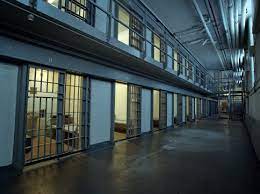Education in Prisons

Life in prison is anything but ideal, but the reality is that the population in prisons are rising. Another reality is that everyday people have to pay to provide necessities for prisoners. One way to combat both of these problems is to introduce different forms of education in the hopes that when the inmate gets out, they can use this new knowledge for good. This mutual gain can be obtained through high school, college, and vocational classes being offered. People who are incarcerated should be given the opportunity for education to lower the reincarnation rates and allow them to be properly reintroduced into society.
Though education in prisons may be a large upfront investment, ultimately it will save taxpayers money. Everybody who works has a tax taken out that goes towards prison funding. This tax is used to house and feed prisoners. There are more individuals being incarcerated and reincarnated than ever before. If there is a drop in laborers and an increase in felons, the tax will ultimately rise. Education in prisons is one essential way to counteract this: “For every dollar spent on prison education, taxpayers are estimated to save four to five dollars that would have been spent on incarceration. Putting more money back into consumers’ pockets and providing previously incarcerated individuals the necessary tools to be competitive in the job market will spur economic activity and productivity” (“Education Opportunities in Prison”).
This “spur” is caused by education because it has shown that it positively affects reincarnation rates. The lower the amount of people in prisons the lower the tax every day people have to pay. It also benefits the economy as a whole because there will be more workers and more taxpayers. Ultimately this means that there is a smaller tax distributed over more people. Education is especially beneficial in low-income communities and disproportionately black communities because of the substandard education that is provided by schools.
Prisons have tremendously unequal African American populations, which is mainly caused by the lack of education. Many people come into adulthood already facing the odds that are stacked against them. This was true for Kilroy Watkins who was told to take a test to assess his skills and abilities: “‘It was embarrassing,’…when his scores revealed he was reading at a fourth-grade level and doing math at a fifth-grade level. ‘I thought my test had been rigged’” (“The Rise and Fall of Prison Education”). This personal testimony shows the level of education most prisoners are at. The Bureau of Justice Statistics shows that 41.3 percent of total incarcerated individuals have only some or less high school experience (“Educational and Correctional Population ”). As Kilroy Watkins stated he was embarrassed by his results. This means that many do not understand their own education levels. When these undereducated adults get pushed back into society after being released it is hard to make the change needed: “Formerly incarcerated individuals with low levels of education often find themselves without the financial resources or social support systems upon their release from prison and therefore are more vulnerable to committing criminal acts rather than becoming reintegrated into society” (“Education Opportunities in Prison”).
One reason why the populations in prison are so high is because the recidivism rates are high. There is also a direct correlation between low education and incarceration. Many believe that this illegal lifestyle is what is meant for them. It is hard to beat society’s odds especially as a minority in a low income community. Education opens many doors in terms of working opportunities and could be the change someone needs to better their future.
There is concern about the quality of education that can be provided by prisons, but this initiative is being more widely accepted across colleges and jobs. Some colleges and GED programs are now accepting these classes, and prisoners are spending their time bettering themselves: “That year, incarcerated students in Illinois were awarded more than 2,000 GED certificates, more than 3,000 vocational or college vocational certificates, and more than 500 college degrees, according to those reports” (“The Rise and Fall of Prison Education”). These numbers are in Illinois alone, so if similar classes were introduced throughout every state an immense amount of prisoners would be able to reintroduce themselves into society.
People with nonviolent crimes are also offered time off of their sentences if they choose to take these classes. There are high school classes, higher education classes, and vocational classes if one prefers non-traditional schooling. All of these provide a pathway to life outside of prison that is not crime related. Some are concerned that education in prisons does not have a direct effect on money saving, but studies over the past 20 years find that investments into prisoner education lower recidivism rates. This initiative is revolutionary for this generation and the next: “In 2016, the RAND Corporation produced a report that showed that individuals who participate in any type of educational program while in prison are 43 percent less likely to return to prison. In addition to reducing recidivism, education can improve outcomes from one generation to the next.
Research shows that children with parents with college degrees are more likely to complete college, which can create social mobility for families” (Education Opportunities in Prison). There is a ripple effect of education. If the reincarnation rates are lowering for this generation then it is more likely for future incarnation rates to also be lower. 43 percent is almost half, this is a huge number of people and shows how education works. As more resources are introduced, the number continues to grow. Society puts such a concern on everyday people going to college and getting the right education, so the same priority should be for prisoners. Prison schooling has shown that it helps recidivism rates and quality of prisons. Felons are people too and deserve the right to education.
Incarcerated felons who are given educational opportunities have a higher chance of finding jobs after being released and a smaller chance of being readmitted. These facts and testimonies show the importance of education. It benefits not only the prisoners but also society. It is important to consider this essay because in people’s everyday life they do not usually stop and think about prisoners or the conditions they are living in. It is sometimes hard to look past the crimes, but it is important to humanize the prisoners themselves. These new opportunities can hopefully make outside life a little bit easier. They are already facing so many difficulties whether it be their fault or not, but education could be an outlet that is beneficial for everyone.

